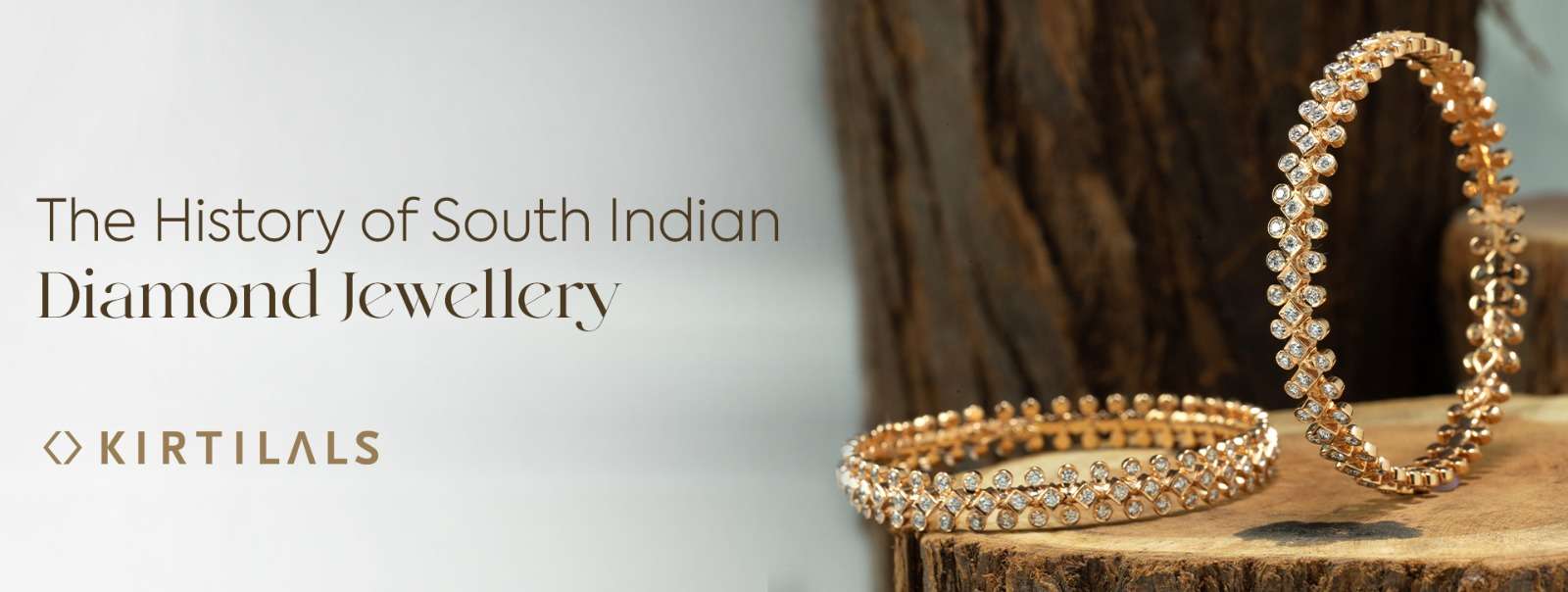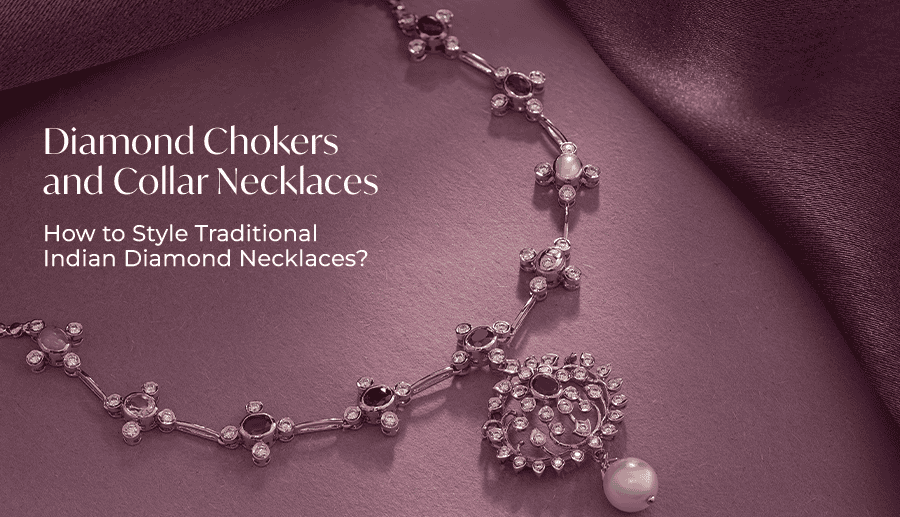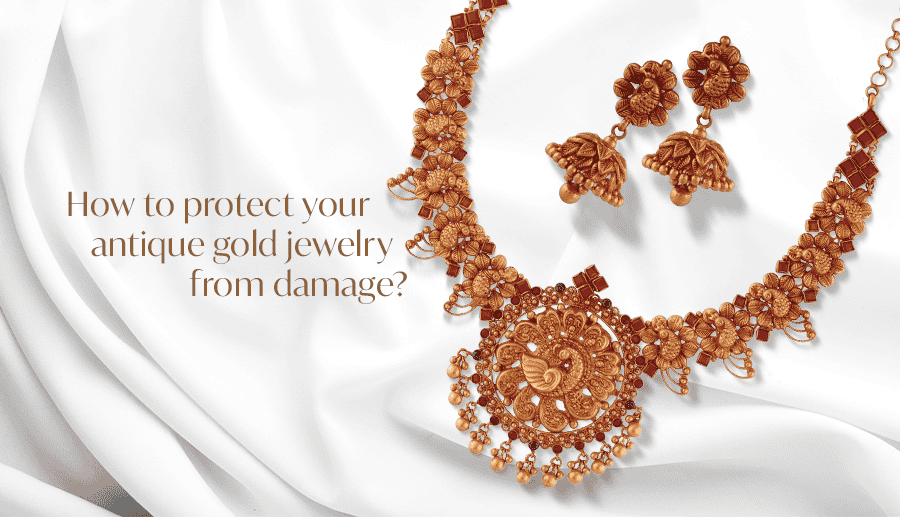Home > Blog > The History of South Indian diamond jewellery and its cultural significance

Author:KIRTILALS TEAM
The History of South Indian diamond jewellery and its cultural significance
Let’s take a journey through time to explore the cultural significance of diamonds in South Indian jewellery.
Diamonds have been mined in India for centuries, and the country was the world's only source of diamonds until the 18th century. The Golconda mines, located in present-day Andhra Pradesh, were the most famous diamond mines in the world, and they produced some of the largest and finest diamonds ever known. The diamonds from these mines were used to create some of the most exquisite jewellery in the world, including the famous Kohinoor diamond.
South Indian diamond jewellery has a long and rich history that dates back to ancient times. The region's rulers, including the Cholas, the Pandyas, and the Vijayanagara Empire, were known for their patronage of the arts and their love for fine jewellery. The jewellery created during this period was often large and elaborate, featuring intricate designs and exquisite craftsmanship. The diamonds used in these pieces were often cut in the traditional Indian style, which emphasizes the stone's brilliance and fire.
During the 18th and 19th centuries, South India saw a resurgence in diamond jewellery making. The region's craftsmen created a new style of jewellery that combined traditional Indian techniques with European designs. The result was a unique and beautiful style that became known as the "Indo-European" style. This style featured intricate filigree work, delicate settings, and the use of both diamonds and colored gemstones.
The History of diamonds in South Indian jewellery
The history of diamonds in South Indian jewellery can be traced back to the 9th century AD. The Chola dynasty, which ruled over parts of South India during this period, was known for its patronage of the arts and jewellery-making.
Diamonds were initially used as an embellishment for gold jewellery, and their popularity grew over time. The Golconda mines were a significant source of diamonds during this period, and the diamonds from this region were renowned for their quality.
During the 16th century, the Vijayanagara Empire, which ruled over most of South India, was a major center for the diamond trade. The empire's capital, Hampi, was a hub for diamond merchants from all over the world.
Symbolism of Diamonds in South Indian Culture
In South Indian culture, diamonds are considered a symbol of prosperity, success, and spirituality and are used in various types of jewellery, including necklaces, earrings, bracelets, and rings.
Diamonds are associated with the planet Venus in Indian astrology, and it is believed that wearing a diamond can bring good fortune and improve one's love life. The diamond is also associated with the goddess Lakshmi, who is the goddess of wealth and prosperity.
The art of diamond cutting and polishing in South India
South India is known for its expertise in the art of diamond cutting and polishing. The region has a long tradition of diamond cutting, and the craftsmen use traditional techniques to cut and polish the diamonds.
The diamond cutters in South India are skilled in cutting diamonds of various shapes, including the famous Indian cut, which is a unique cut that maximizes the diamond's brilliance. Diamond polishers use traditional polishing methods, including the use of natural oils and powders, to bring out the diamond's shine.
Famous South Indian diamond jewellery designs
Diamonds are used in various types of jewellery in South India, including necklaces, earrings, bracelets, and rings. The jewellery is often made using gold or silver, and the diamonds are set in intricate designs that are unique to the region.
One of the most popular types of diamond jewellery in South India is temple jewellery. This type of jewellery is often used in religious ceremonies and is characterized by its intricate designs and use of precious stones, including diamonds.
One of the most famous designs is the Nizam diamond necklace, which was created for the Nizams of Hyderabad in the early 20th century. The necklace features over 200 carats of diamonds and is considered one of the most valuable pieces of jewellery in the world.
Another famous design is the Vaddanam, which is a traditional South Indian waist belt. The Vaddanam is often made using gold and diamonds and is worn by women on special occasions such as weddings.
Another most significant piece of South Indian diamond jewellery is the "Manga Malai," or the mango necklace. This necklace features a series of mango-shaped pendants, each set with diamonds and other precious gemstones. The mango is considered a symbol of fertility and abundance, and the necklace is often used as a bridal diamond necklace.
Another significant piece of South Indian diamond jewellery is the "Vanki," or the armlet. The Vanki is worn on the upper arm and is often set with diamonds and other precious stones. It is considered a symbol of strength and power, and it is often worn by women during religious ceremonies.
South Indian diamond jewellery is also known for its intricate designs and craftsmanship. Many pieces feature intricate filigree work and delicate settings, which require a great deal of skill and expertise to create.
The enduring legacy of diamonds
Diamond solitaire earrings, solitaire diamond ring, diamond necklace sets, diamond choker necklaces, diamond bangles and solitaire pendant are often passed down from generation to generation and is considered family heirloom.
Diamonds have left an enduring legacy in South Indian jewellery, and their cultural significance remains strong to this day. Whether worn during special occasions or passed down as a family heirloom, South Indian diamond jewellery will continue to play an important role in the region's cultural heritage for generations to come.
If you're interested in learning more about South Indian jewellery and diamonds, visit Kirtilal jewellers or explore online for Kirtilals Diamond.

.png)
